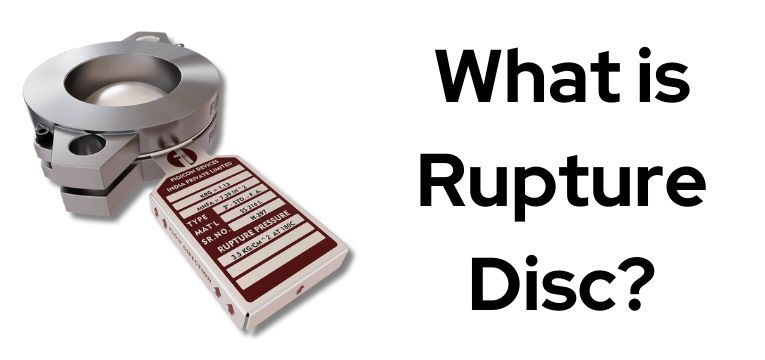The rupture disc is device that is created to function by the burst of a disc that holds pressure.
This is an extremely thin and circular membrane typically comprised of plastic, metal or graphite. It is tightly fixed in the disc holder. Once the process has reached the pressure at which it can rupture the disc, the disc breaks and the pressure is released.
discs with rupture can be utilized as a stand-alone device or in conjunction with other kinds of devices. After they’ve been rupture discs have been blown, they will not regenerate; therefore the whole contents of the process equipment will be disposed of.
Rupture discs are often utilized in sequence (upstream) together with relief valves to stop corrosion-causing fluids from coming into contact with the parts made of metal in the valve. Furthermore, this system is an open system.
The purpose of Rupture discs
The rupture disc is an incredibly sensitive relief device that can rupture at a set temperature and pressure. It is an instrument to provide security for equipment and personnel. Therefore, it should be a fail-safe gadget. Rupture discs are employed when immediate and complete opening of a relief device is necessary. These devices are employed when “zero” leak-age is required for an emergency relief device. They can also be utilized in groups as “quick opening” valves.
discs for Rupture may be utilized in relief in primary relief, in secondary relief, in conjunction using a relief valve or in other applications like “quick opening” valves.
Primary Relief
If it is used for primary relief the disc that ruptures is the sole device used to provide relief from pressure. It offers the advantages of being leak-proof, instantaneous response time, a low pressure drop, the lowest cost, high Reliability, and low maintenance. However, it has a disadvantage in that it has to be replaced following each rupture it occurs, and permits venting until the system pressure is equal to the downstream pressure.
Secondary Relief
If used in an additional relief capacity the rupture disc acts as an additional vent for the primary relief device which is usually a relief valve. The reason for this is typically to provide security against a potential major event that may overpower the capacity of the relief device that is primary.
In series with the Relief valve
If used in conjunction with a pressure relief valve it is recommended that the disc rupture is typically installed downstream within the valve. The disc will safeguard the valve from corrosive process media which can be corrosive or cause it to plug. The disc can also serve as a seal to prevent any leakage into the valve, unless the disc is broken.
Space between rupture disc and pressure relief valve should have the pressure gauge. You can try the cock, free vent or a suitable indicators to detect. The usual design is an extra flow valve in conjunction with the pressure gauge. Its purpose is to reduce the chance of, or ease the detection of backpressure build-up. Since a disc reacts to the differential pressure that is applied across it and is able to detect backpressure, it will not rupture at the nominal pressure if back pressure is allowed to build up in the cavity.
A rupture disc with low pressure can be installed to protect the downstream of a relief valve that is discharged into the common manifold in order to stop the valve from being exposed to corrosive or processing media that discharges through the manifold. Space between outlet of the Relief valve as well as the disc for rupture needs to be vented to stop the build-up of pressure which may adversely affect the pressure set by the Relief valve. A flow valve that is overflowing will suffice for this feature.
